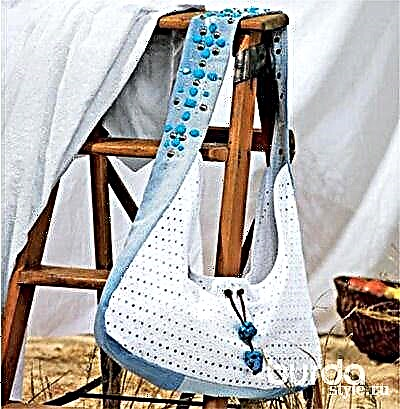Elastic, durable and tight-fitting like a second skin, diving is suitable for sports, casual and even for evening wear.

What is diving knitwear and what is its composition
Diving is a modern type of knitwear made mainly from artificial and synthetic fibers. Initially, diving was used for the manufacture of sportswear, including diving suits, hence its name. In the future, with the advent of new varieties of this material, underwear began to be sewn from diving, including corrective, body, leggings, swimwear, casual and other clothes.
Polyester or rayon may predominate in the composition of the diving, and about 5% elastane (also known as spandex) is necessarily present. A small proportion of cotton fibers (usually up to 10%) is possible. Diving stretches well, in width is better than in length. For the ability to perfectly fit the body, it is also called "second skin knitwear."
What is an oil jersey?
Varieties of diving

Diving can vary not only in composition, but also in density, thickness, and finish.
* Microdiving is the thinnest, most plastic variety.
* Crepe diving - a canvas with a more or less textured, but silky surface, made using crepe (strong) twist fibers.
* Diving flock - a lightweight canvas with a textured pattern.
* Tight diving - accordingly, the most dense material, may have a fleecy inside out.

Microdiving / Crepe Diving
Diving Flock / Heavy Diving
The front side of the diving can have a matte or bright shine, be textured (in the case of crepe diving), include a metallized thread. The wrong side may correspond to the face or differ - both in texture and color. For example, crepe diving can be with a dressing or a metallic thread on the front side and smooth from the inside. Diving, both dense and thin, can combine smooth front and fleecy seamy sides.
What kind of material is supra?
Diving Properties

For different types of diving, common properties can be distinguished:
* Elasticity and ability to return to original form
Products from diving well fit the body, while not being deformed, not stretched. When washing, diving does not set.
* The ability to drape beautifully
Almost all types of diving are well draped, forming beautiful folds.
* Resistance to peeling
On diving do not form spools - drank.
* Strength, durability
Diving is quite difficult to break, it is not prone to puffs, not wiped.
* Keeps original color for a long time
Diving does not lose color even from many washes. True, it can burn out from prolonged exposure to direct sunlight.
* Well absorbs and removes moisture
Diving absorbs and removes moisture well from the body, while it dries quickly.
* Instability to high temperatures
Due to the high percentage of synthetic fibers, diving can be deformed from high temperatures, such as too hot iron.
* Almost no creases
Some types of diving do not crease at all, but some may wrinkle a little. It depends on the composition and density.
What kind of fabric is canvas?
How to care for diving:

* Hand and machine washable (delicate mode).
* Water temperature during washing - 30 degrees.
* The use of chlorine-based bleaches and aggressive stain removers is not recommended.
* Ironing at minimum temperature, through an iron. Do not use steam, this may destroy the structure of the material.
* But if after washing and rinsing do not squeeze the diving too hard and dry straightened on a flat surface, ironing the product may not be necessary.
What kind of jersey fabric: features, properties, care
What is sewed from diving?

Different types of diving are suitable for different products.
From thin diving sportswear, swimwear, leggings, body, thin gloves, light everyday things are sewn. These materials are good for sewing gymnastic leotards and tights.
Crepe diving is also suitable for tailoring dresses, skirts, tops, including elegant ones.
From dense types of diving, sports things are sewn - both for sports and everyday in a sports style.
Eye to eye: 10 interesting facts about knitwear
Patterns of dresses from knitwear and elastic fabrics
Knitted fabrics with elastane fibers: properties and characteristics of the material
How to wash knitwear: 8 simple rules



